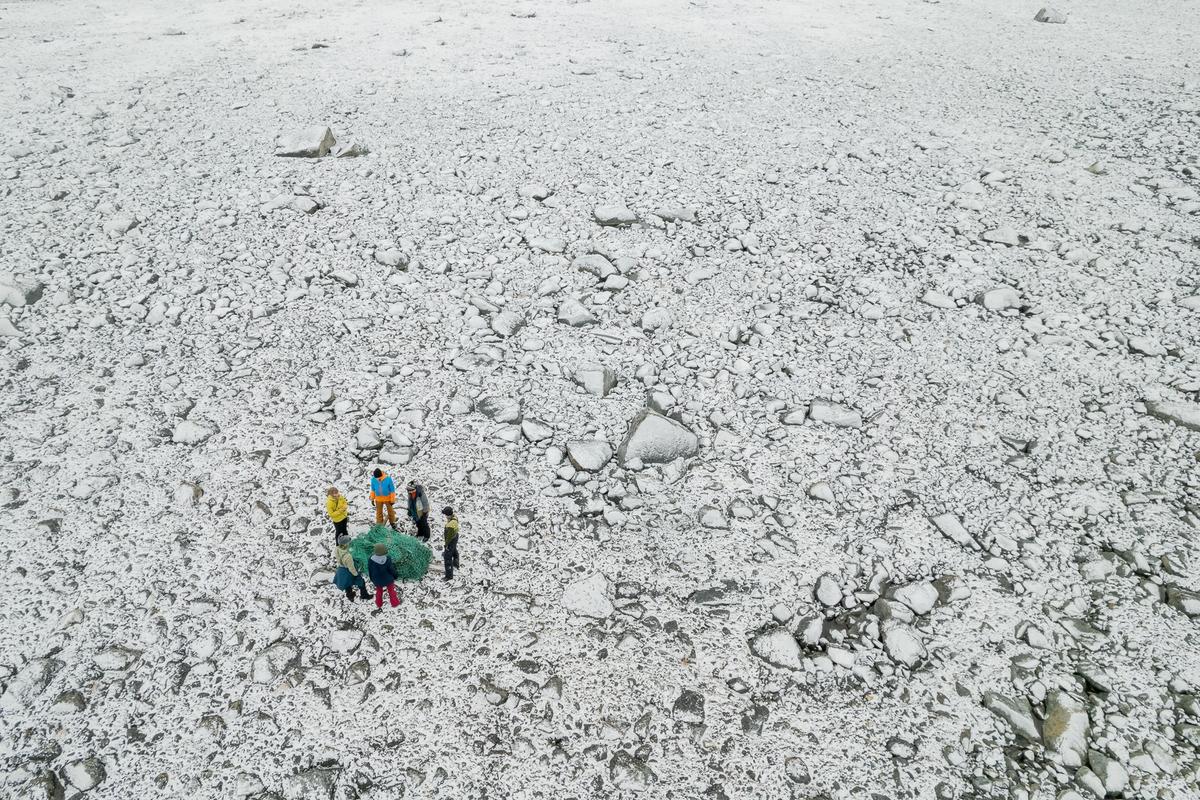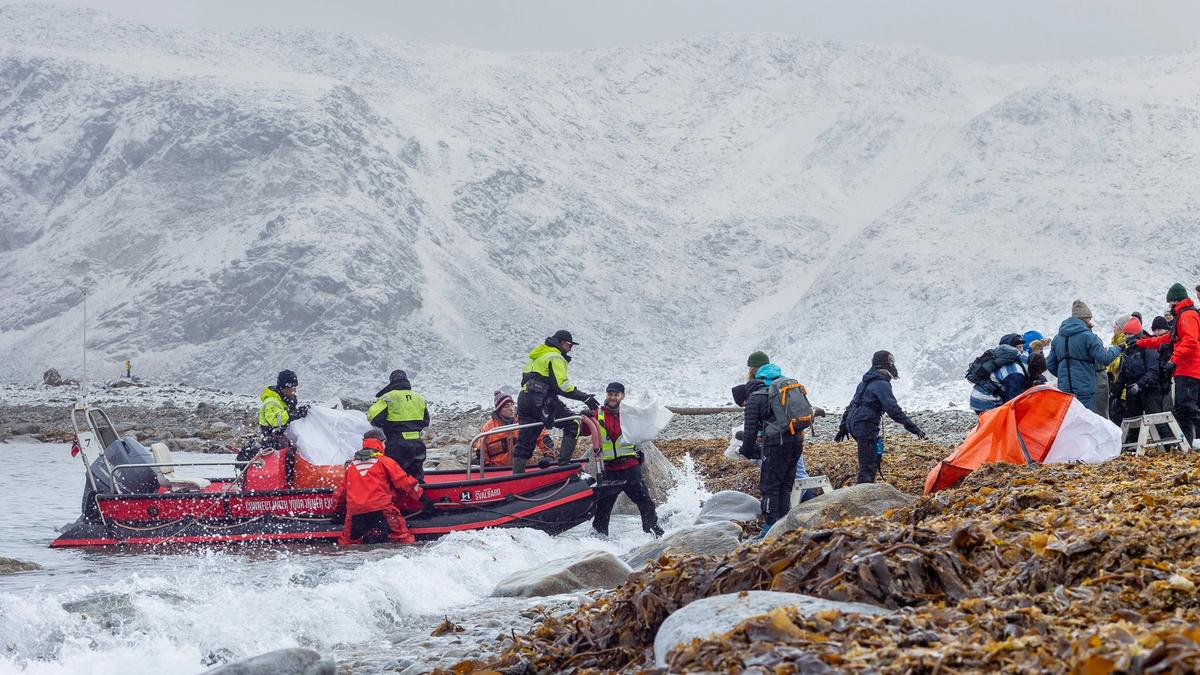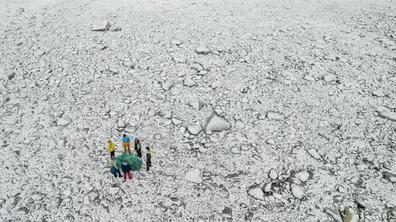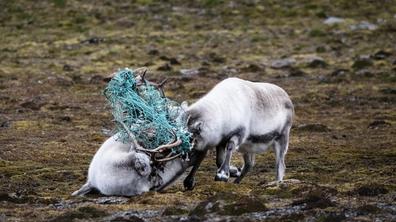There are many indications that a substantial part of the litter on the beaches in the Arctic comes from activity at sea and some from populated areas in the region. It is therefore important to reduce littering where it occurs in the Arctic.
Reducing litter from fishing and sea-based industries
Today, much of the litter in the Arctic originates from the industries in the area, such as fishing, shipping and tourism. Fishing in particular constitutes a major source of litter. There are also strong indications that sea-based activities will increase in future years. This means that the risk of litter will also increase.
In the Arctic, fishing takes place in both national and international waters and vessels are registered both nationally and internationally. Analyses show that fishing-related litter is significant in the Arctic. On Svalbard, several registrations show that the proportion of fishing-related litter has been around 80 per cent.
This demonstrates that there is a great need to prevent litter from sea-based sources, especially from fishing. There are several ongoing initiatives relating to fishing gear design and ghost fishing and these are important when it comes to reducing this type of litter. What many note, both within the industry and in recommendations drawn up in connection with the analysis of macroplastics in the Arctic, is that waste management on board boats and at port will be crucial in reducing litter from everyone who uses the sea. One example is ropes and cut-offs, which are some of the most commonly recorded items found on beaches in the Arctic. In order to combat such litter, better procedures for the collection and storage of cut-offs on board will be required, alongside improved waste management systems at port. One project that took a closer look at this type of litter in particular and recommends a best practice is the KIMO project Forget me Knot.
The international standard for waste reduction and treatment on fishing vessels (ISO-5020) was released in 2023 and constitutes a specific measure to reduce litter originating from the fishing industry. One of the goals of the standard is to reduce the influx of macroplastics and microplastics from the industry and reduce litter in the shore zone. The standard also constitutes a key contribution when it comes to preventing ghost fishing. Adopting the standard in the Arctic will be an important step on the way to success in preventing sea-based litter.
Work is currently under way to develop an ISO standard for the aquaculture industry. The goal is for the standard to be adopted during the winter of 2024.
The Arctic campaign Are you feeding the plastic monster? also addresses the litter issues associated with pieces of rope, cut-offs and small pieces of plastic in the Arctic, and the goal is to raise awareness of this type of litter among everyone who uses the sea.

Better waste systems in populated areas
Several litter analyses from Arctic beaches show that consumer-related litter increases closer to populated areas. This is also the global trend. The reason for this can be found in how waste is managed where people live. The establishment of waste management systems in populated areas of the Arctic is an important initiative in reducing local litter.
Waste management in the Arctic is challenging.Waste management must be adapted to local conditions and possibilities. The vast distances, challenging climate and the fact that towns and cities are small mean that it can be challenging to adapt.Landfill, for example, which is a common solution on a global level, becomes difficult due to the permafrost. The vast distances affect the degree of material recovery that can be carried out due to low levels of profitability and high emissions from transport. Incineration plants are one option, which are set be implemented on Greenland.Many places, especially in the far north of the Arctic, have low population numbers, making incineration plants difficult as the volume of waste will not be sufficient to produce energy on a regular basis. There are also major differences when it comes to socio-economic conditions in the Arctic. This affects the ability to invest in waste management systems that people can afford to use.
Open landfills for incineration have been used as a solution in many small areas, which means that the waste can easily go astray due to the harsh climate. It also makes the waste much more accessible to animals and birds.
Closed systems are therefore needed for better waste management and to reduce local litter in the Arctic. However, litter is not the only environmental issue associated with poor waste management - leakage to the ground and water from poorly secured waste facilities can lead to the spread of environmentally harmful substances.

There are some excellent examples of solutions and initiatives:
- Longyearbyen on Svalbard has a dedicated recycling centre. The goal is for more than 90 per cent of household waste and industrial waste to be transported to the mainland for recycling. There are also active efforts to avoid overflowing waste containers, as this constitutes a source of litter. Longyearbyen has had a waste management plan in place since 1976.
- In Greenland, a national waste management company has been established that aims to create a better waste management system for the towns and settlements on the island. The plan is to build incineration plants in Sisimiut and Nuuk. The company has a dedicated vessel that is used to transport waste for incineration and recycling.
- In 2018, the Sámi Parliament conducted “The Kola Waste Project” to assist Russian communities. A total of 43 unauthorised flytipping sites were identified and cleared. The project helped raise awareness of waste management in the region.
Cleaning up the Arctic

The challenges of cleaning beach litter in the Arctic are numerous, especially in the less densely popular areas where there is limited infrastructure such as roads and ports. Few people and large amounts of waste in areas that can only be reached by boat, small aeroplanes or helicopter limit the amount of beach litter that can be cleared in the coastal areas of the Arctic. Surveying and clean-up activities often take place in conjunction with other activities, such as research or tourism. Combining clean-up activities with other resources operating in the area is a positive, but at the same time the approach is vulnerable.
In order for clean-up activities to be effective, we need targeted efforts and dedicated clean-up projects to reduce the amount of existing litter along the Arctic coast. This would benefit the Arctic fauna and flora, while also entailing major costs and challenges in terms of logistics and HSE.




